Atlantic Monthly Contributors's Blog, page 307
November 3, 2015
Did Amazon Just Replace the Public Library?

It’s often been said that Apple Stores—soaring glass, sweeping stairs, light-flooded spaces echoing with the din of human voices—function, in their way, as secular cathedrals. The stores— though the word “store” doesn’t quite feel adequate—celebrate both introspection and communion. They are meant to humble and inspire. “They feel iconic, like an emblem of the personal,” the cultural historian Erica Robles-Anderson has put it.
Apple’s success in translating the religious revivalism of digital retail spaces into physical ones is something other brands (Google, Microsoft, Samsung) have tried to emulate—with, generally, much less success. Theirs are stores that have not been converted, via savvy branding, into temples. But now there’s another digital retail behemoth trying to take a lesson from Apple: Amazon. Which on Tuesday opened its own digital-to-physical retail space: a large bookstore named, simply, Amazon Books. The store, in Seattle’s University Village, is notably (and, of course, ironically) Barnes & Noble-like in its aesthetic. There’s a lot of wood. There are a lot of shelves. There are a lot of books! The dream of the ’90s is alive in Seattle, apparently.
Amazon Books is on the one hand a continuation of efforts its parent company has made with its grocery offerings and locker-based pick-up systems: experiments with the merging of digital retail and physical. (The store is “a physical extension of Amazon.com,” its press release notes. It’s also “a store without walls.”)
But Amazon Books is also much more than simply another delivery platform. This is a store in the manner of TOMS, with its attached artisanal cafes, and of Anthropologie, with its integrated art installations: It’s a space that encourages patrons to hang out in, to spend time in, to settle down in. Amazon Books, like a Barnes & Noble of yore, comes complete with plush leatherette chairs for relaxed reading. There are open areas for browsing and chatting. There’s a kids’ area. (“Relax, read, and discover great books with your children,” the release invites.)
Which is also to say that Amazon Books is trying to be a place of community—a place where people will meet and hang out. A place that celebrates both introspection and extroversion. A place much like Apple’s buzzing, light-flooded, free-wifi-enabled temples—only with the tech gadgets on display being, for the most part, books.
Which makes sense. Amazon has always been, implicitly, about community, with “customers” and “customers who bought this item” and the like omnipresent, if anonymous, in the commercial transactions it hosts. Amazon Books is simply translating that implied community into a more immediate one. “To give you more information as you browse, our books are face-out,” Amazon notes, “and under each one is a review card with the Amazon.com customer rating and a review. You can read the opinions and assessments of Amazon.com’s book-loving customers to help you find great books.”
The selection of books on display, too, is determined by the community. (“The books in our store are selected based on Amazon.com customer ratings, pre-orders, sales, popularity on Goodreads, and our curators’ assessments,” Amazon notes.) Instead of the Employee Picks shelves that are mainstays at local bookshops, Amazon’s store gives prominent placement to books that are “Highly Rated (4.8 Stars & Above).”
All of which gives Amazon Books a fighting chance to become what the Google store and the Microsoft store and their fellow efforts have failed to become: Apple-y cathedrals to commerce. But it also means that Amazon Books could become something else in the process, emulating institutions that have been their own kinds of cathedrals: libraries. Which have traditionally been just what Amazon is aiming to create: spaces that are premised on books, but realized by community. The books here may be bought rather than borrowed, certainly, but in terms of the space created, the goal is the same. Amazon Books is a store doing the work of a cultural institution. It’s about commerce, yes, but it’s also about collectivity. It is, in form if not in name, a library. And its librarians are the same people who serve as curators for amazon.com: fellow customers.









A Slick Gambit by the Makers of the Keystone Pipeline

In a move that further complicates an already protracted drama, TransCanada, the company behind the $8 billion Keystone XL pipeline, has formally asked the State Department to delay its review of the controversial project.
“In order to allow time for certainty regarding the Nebraska route, TransCanada requests that the State Department pause in its review of the presidential permit application for KeystoneXL,” the company’s president wrote in a letter to U.S. Secretary of State John Kerry.
Invoking Nebraska, where landowners have long been haggling with the company over possible routes for the pipeline, is a piquant twist in the years-long political saga. As my colleague Russell Berman reported in January, after Nebraska’s Supreme Court threw out a legal challenge to the project, the pipeline’s Republican supporters urged President Obama to approve it without delay. “No more excuses for President Obama,” former House Speaker John Boehner tweeted at the time.
Several months later, the more likely rationale for the request is that the State Department appears poised to finally shoot down TransCanada’s bid.
“TransCanada’s move comes as the State Department was in the final stages of review, with a decision to reject the permit expected as soon as this week, according to people familiar with the matter,” reported Amy Harder at The Wall Street Journal.
With global oil prices low and new Canadian Prime Minister Justin Trudeau, seen as a less ardent supporter of the project, now in office, the surprise decision to request a delay is being viewed by some as a gambit to stall a decision until more favorable conditions return—like when President Obama is no longer in office.
The proposed 1,200-mile conduit, which would carry oil from the Canada sands to the Gulf of Mexico, has so far only carried venom between the consortium of liberal politicians and environmentalists that vigorously oppose it and the conservatives that vigorously support it. That latter camp includes all Republican presidential candidates.
Back in September, Democratic frontrunner Hillary Clinton, who oversaw the early stages of the recommendation process, finally announced her opposition to the project. On Tuesday, her rival Bernie Sanders, who has opposed the project since in 2011, reiterated his disapproval.
In the meantime, TransCanada’s request doesn’t mean that the State Department is obligated to stop its review of the project. However, should the delay be granted, the company may have just assured that the issue finds its way back into the 2016 spotlight.









What Brought Down the Russian Plane?

Russian families have begun identifying the victims of Saturday’s plane crash in Egypt, which killed all 224 people on board.
Egypt’s aviation minister said Tuesday that Egyptian and Russian investigators are starting to examine the black boxes—devices that record flight data and audio from inside the pilot’s cockpit—recovered from the downed commercial jet. But officials from both countries, as well as aviation experts, say it’s too soon to know what caused the crash.
There is no consensus over the events preceding the crash, either. On Sunday, a Russian aviation official said that because debris was spread over a large area, the plane must have broken apart in midair. On Tuesday, Egypt’s civil aviation ministry said there was no evidence to back up that claim.
Flight 9268, operated by Russian airliner Kogalymavia under the name Metrojet, departed Sharm el-Sheikh, a resort city on the Red Sea, early Saturday morning, bound for St. Petersburg. All the passengers and crew were Russian, except for three Ukrainians and one Belarusian. About 20 minutes into the flight, the plane dropped off radar screens. Egyptian rescue teams discovered the wreckage in a remote part of the Sinai Peninsula. Russia has established a state commission to investigate the crash, and other nations are also aiding in investigations.
The black boxes may hold the answer to what happened to Flight 9268. But until their contents are analyzed and released, people are left to speculate. Here’s a guide to some of the theories about what may have happened.
Technical Problems
Russian officials have not yet ruled out the possibility of a technical malfunction. Egyptian officials say the plane passed a pre-takeoff inspection, and Kogalymavia has insisted the Airbus plane was in “excellent condition.” But the wife of the co-pilot told a Russian TV channel on Saturday that her husband, speaking to a daughter, “complained before the flight that the technical condition of the aircraft left much to be desired.”
A CNN aviation analyst, formerly of the National Transportation Safety Board, considered on Tuesday the role of “an earlier maintenance problem.” In 2001, the tail of the same Airbus that crashed on Saturday was damaged when the aircraft struck the tarmac upon landing in Cairo. But Kogalymavia said Monday the tail had been “fully repaired,” and so could not have contributed to the crash. Reuters points out that poor tail repairs have caused two major civilian aviation accidents, one in 1985 that killed 520 people and another in 2002 that killed 225. In those cases, the repairs had been made years before the planes crashed.
There are conflicting reports about whether the pilot in Saturday’s crash communicated technical difficulties to air controllers before losing contact. One Egyptian aviation official said the pilot radioed to say he would attempt to land at the nearest airport, another such official said “there was nothing abnormal” before the crash.
‘Mechanical Force’
A Kogalymavia official said Monday that the crash was not the result of technical problems, but of another “technical or physical action” from outside of the aircraft.
“The only possible explanation is a mechanical force acting on the aircraft,” said Alexander Smirnov, the company’s deputy general director, though he didn’t say what that “force” could be.“There is no combination of system failures that could have broken the plane apart in the air.”
He added: “We rule out a technical fault and any mistake by the crew.”
‘A Catastrophic In-Flight Event’
Citing a U.S. official, CNN reported Tuesday that a U.S. military satellite detected a heat flash in the sky over the Sinai that officials have attributed to Flight 9268. The presence of a heat flash suggests that there was “a catastrophic in-flight event”—possibly an explosion from inside the plane, CNN wrote. More:
Analysts say heat flashes could be tied to a range of possibilities: a missile firing, a bomb blast, a malfunctioning engine exploding, a structural problem causing a fire on the plane or wreckage hitting the ground.
Terrorism
A local affiliate of the Islamic State quickly took responsibility for the crash, saying that it “brought down” the plane, but did not offer any evidence. Russian officials have dismissed that claim, but haven’t ruled out terrorism as a possible cause. NBC News reports that U.S. intelligence analysts say satellite imagery rules out missiles as the cause.
Miscellaneous ‘Elements’
Russian news agency TASS, citing unnamed sources in Cairo, reported Tuesday that investigators had found and will analyze mysterious “elements” at the crash site that are not typically found in an Airbus’s structure. But the sources also said the material may not be sinister at all, and could be diving equipment from passengers’ luggage. NBC News said an adviser to Egypt’s aviation minister has denied the TASS report.









Gaudí’s Basilica Finally Nears Completion

In August 1963, Merloyd Lawrence wrote a dispatch in The Atlantic from Barcelona, mentioning many of the city’s cultural landmarks: the merchants on Las Ramblas, the food, and the buildings designed by Antoni Gaudí, the “architect laureate of Catalonia.” After a disclaimer noting that many a “discriminating traveler has found his work hideous,” Lawrence describes the Iglesia de la Sagrada Família, Gaudí’s most famous building, as an “unfinished, uninhibited cathedral in which stone explodes into botanical fantasies or overflows like molten wax.”
52 years after Lawrence’s piece appeared in The Atlantic and 132 years after construction began in 1883, the magnificent Sagrada Família has reached its final stage of construction. According to the current chief architect, Jordi Fauli, six more towers will be added to the basilica by 2026, bringing the grand total to 18, each of which is dedicated to a different religious figure. The building’s completion is timed to coincide with the 100th anniversary of the architect’s death, although adding the final decorative elements could take another four to six years after the towers are erected. When it’s finished, the basilica will be the tallest religious building in Europe, standing at 564 feet.
Gaudí famously believed that his client, God, was in no hurry, and over its long gestation period La Sagrada Família has acquired a bounty of fantastic descriptors, with citizens, tourists, and critics debating whether it’s a work of genius or garishness. Salvador Dalí called it a “tactile erogenous zone” and Walter Gropius deemed it “a marvel of technical perfection.” Various news outlets have called it “monstrously, outrageously kitsch”; a “teeming jumble”; “the crown jewel in Barcelona’s architectural landscape”; “sensual, spiritual, whimsical, exuberant”; “a cluster of gigantic stone termites’ nests” and “a gingerbread house baked by the wickedest witch of all.”
The controversy is especially keen because Gaudí died in 1926, and the basilica in its current form may be less than half of his original design. Others say that the building should never be finished, and that its perpetual state of construction is central to its charm. It’s impossible to estimate how much construction of the Sagrada Família has cost over the years, but the annual costs of construction and maintenance run to around €25 million a year, paid for by the site’s three million annual visitors as well as private donors.
In 2011, the writer and self-proclaimed Gaudí skeptic P.J. O’Rourke wrote in The Atlantic about his attempt to use Gaudí to understand the whimsical shapes of 21st-century architecture (Read: Frank Gehry). He pondered whether La Sagrada Família would always be under construction, standing as a constantly morphing monument to the architect’s genius.
It would shake the faith back into anyone to look at Gaudí’s depiction of all creation melting in love on the Nativity facade. I behold, with strained peripheral vision, the nave and aisles that hold 14,000 worshippers. And these are the least interesting parts of the building.
Gaudí considered the Gothic style imperfect, because buttresses are needed to hold up the soaring magnificence. The house of God should stand on its own. Gaudí found solutions in plant and animal forms, in hyperboloids, paraboloids, and helicoids (respectively, saddle-shaped curves, cones, and spirals). And he made use of fractals, structures that split into smaller replications of themselves, the way broccoli does … If a Gothic cathedral is (as some have said, misapplying their Shakespeare) a sermon in stone, then La Sagrada Família is a sermon in broccoli. And none the less powerful for it.
In the end, O’Rourke concluded that “Gaudí’s architecture isn’t whimsical at all,” but that rather, he is God’s own engineer. And in 11 years, his vision—or at least the amalgamation of his inspiration and that of the architects who’ve presided over it in his absence—will finally be complete.
In Photos: One Hundred and Thirty-Two Years of Gaudí









When People—and Characters—Surprise You
By Heart is a series in which authors share and discuss their all-time favorite passages in literature. See entries from Karl Ove Knausgaard, Jonathan Franzen, Amy Tan, Khaled Hosseini, and more.
 Doug McLean
Doug McLean We talk about people—friends, lovers, public figures—as though they have consistent, defined personalities. “She’d never do that,” we say, or, “No, that’s not his style.” But Mary Gaitskill, the author of The Mare, is interested in the moments when behavior becomes incompatible with one’s broad sense of who a person seems to be, for better or worse. In a conversation for this series, we discussed a passage from Anna Karenina where both Anna and her husband surprise readers with uncharacteristic generosity and depth of spirit—though, when the moment passes, we’re left to wonder what was real. We discussed why fictional characters convince readers most when they behave unrealistically, and the way that hidden selves take shelter behind each public face.
In Mary Gaitskill’s fiction, characters often live emotional and sexual double lives. In stories like “Secretary,” which was adapted into a film with James Spader and Maggie Gyllenhaal, and “A Romantic Weekend,” strait-laced characters try out sadomasochistic roles behind closed doors; in thrillers like “The Other Place” and “The Girl on the Plane,” normal-seeming men confide their brutal sexual urges. The Mare explores a different kind of private place. It features a foster mother who’s reckoning with her decision to take in an impoverished Brooklyn child, Velvet, for the summer, and explores the unexpected force with which she starts to feel like a “real” mother, even though the outside world feels otherwise. Meanwhile, Velvet’s classes with an abuse-scarred horse unlock something hidden in her, too. “Being on the mare happened on another planet, someplace beautiful but with outer space all around it,” she says. “I couldn’t even tell it to anybody.”
Gaitskill has been a finalist for the PEN/Faulkner Award and the National Book Award. She’s the author of the story collections Bad Behavior and Don’t Cry, and the novels Veronica and Two Girls, Fat and Thin. Her stories have appeared in venues like The New Yorker, Harper’s, Esquire, and The Best American Short Stories. She spoke to me by phone.
Mary Gaitskill: I read Anna Karenina for the first time about two years ago. It’s something I’d always meant to read, but for some reason I didn’t expect to like it as much as I did. When I finally settled down to read it, I loved it. What strikes me about the book is how precisely rendered the characters are, how recognizable they are as people. It was written so many years ago, and yet the characters are descriptions of people I know and see.
I found one section in particular so beautiful and intelligent that I actually stood up as I was reading. I had to put the book down, I was so surprised by it—and it took the novel to a whole other level for me.
Anna’s told her husband, Karenin, that that she’s in love with another man and has been sleeping with him. You’re set up to see Karenin as an overly dignified but somewhat pitiable figure: He’s a proud, stiff person. He’s older than Anna is, and he’s balding, and he has this embarrassing mannerism of a squeaky voice. He’s hardened himself against Anna. He’s utterly disgusted with her for having gotten pregnant by her lover, Vronsky. But you have the impression at first that his pride is hurt more than anything else—which makes him unsympathetic.
Then he receives a telegram from Anna that says: Please come, I’m dying, I need you to forgive me.
At first, he thinks it’s a deception. He wants to refuse to go. But then he realizes that it would be too cruel, and that everyone would condemn him—he has to go. So he does.
As he walks into the house where Anna’s dying, in the highest point of her fever, he thinks to himself:
He drew a resolution in the far corner of his brain and consulted it. It read: If it is a deception, then calm contempt and depart. If true, observe propriety.
He comes off as very rigid, even in this moment. We think nothing could shake this man’s stolidity. And when he finds out Anna’s still alive, he suddenly senses how much he was hoping for her to be dead—though this realization shocks him.
Then he hears her babbling, in the height of her fever. And her words are unexpected: She’s saying how kind he is. That, of course, she knows he will forgive her. When Anna finally sees him, she looks at him with a kind of love he’s never seen before, she says:
There’s another woman in me. I’m scared to death of her. It’s her that fell in love with that man. I wanted to hate you and I couldn’t. I’m real now, I’m whole.
Anna’s speaking about the decisions she’s made in the third person—as if the person who betrayed Karenin was a stranger. And she does seem to be transformed here, as though she’s become a different person. I was so surprised by that. I think of it as a very modern insight, Tolstoy’s idea that there may be two, or more, different people inside of us.
And it’s not just Anna. As his wife tells him she loves him, begging his forgiveness, Karenin transforms, too. The man we’d thought could never be anything but stiff and dull turns out to have this entirely different side to him.
Throughout the book, he’s always hated the way he’s felt disturbed by other people’s tears or sadness. But as he struggles with this feeling while Anna’s talking, Karenin finally realizes that the compassion he feels for other people is not weakness: For the first time, he perceives this reaction as joyful, and becomes completely overwhelmed with love and forgiveness. He actually kneels down and begins to cry in her arms; Anna holds him and embraces his balding head. The quality he hated is completely who he is—and this realization gives him incredible peace. He even decides he wants to shelter the little girl that Anna’s had with Vronsky (who sits nearby, so completely shamed by what he’s witnessing that he covers his face with his hands).
You believe this complete turnaround. You believe it’s who these people really are. I find it strange that the moment these characters seem most like themselves are the moments when they’re behaving in ways we’ve never before seen. I don’t fully understand how this could be, but it’s wonderful that it works.
But then the moment passes. Anna never talks about the “other woman” inside of her again. At first, I was disappointed. But then I thought: No, that’s actually much more realistic. What Tolstoy does is actually much better, because it's more truthful. We feel a greater sense of loss, knowing it will never happen again.
I very much saw that as the core of the book. Everyone says Anna Karenina is about individual desire going against society, but I actually think the opposite is stronger: the way societal forces limit the expression of the individual.
Karenin, for instance, talks himself down from his most generous moment, knowing that the feeling can’t endure the judgment that would be aimed his way:
The more time that passed, the more clearly he saw that, natural as his situation was for him now, he would not be allowed to remain in it. He felt that, besides the good spiritual force that guided his soul, there was another force, crude and equally powerful, if not more so, that guided his life, and that this force would not give him the humble peace he desired.
As powerful as these emotions are, basic social expectations are “crude and equally powerful.” He knows everyone will utterly look down on him if he does what he wants to do. Actually, I feel that he would do it anyway—except that Anna doesn’t stay with him, either. When she comes out of the fever she no longer remembers what she felt, and she looks at him with fear. She feels guilty, and she simply can’t be the way she had been. Perhaps she doesn’t even remember—as if the other woman has taken over again. And that’s what destroys him.
But which is the real Anna, and which is the real Karenin: the people they are at the tender bedside moment, or the people they become afterwards, when the fever subsides? I don’t think you’re given a clear answer—that’s part of what I like about it. The person Anna reveals when she really believes she’s going to die may be in fact the truer part of herself. As in real life, you can’t know.
I believe that the truest parts of people can be buried, and for many different reasons. It’s very mysterious and strange, and though I don’t think about it consciously while I’m writing, I do believe this about people—so it probably does show up in my work.
I believe that the truest parts of people can be buried, and for many different reasons. It’s very mysterious and strange.People sometimes turn out to be almost the opposite of how they present. It isn’t because they’re trying to fool you, or because they’re hypocrites. It’s because they badly want to be that thing, and so they’ll try to be it. It’s not even like they’re deliberately pulling the wool over people’s eyes. That’s their ideal, and that’s what they try for. But it’s not who they are.
Fictional characters are different. I wouldn’t go so far as to quote Nabokov and say they’re galley slaves, but they are your creations—so they’ll do whatever you want them to do and be whatever you want them to be. Still, you don’t always know exactly what that is when you first conceive of them. And sometimes they do change. I wouldn’t say they surprise you, but your idea of them certainly changes as you go along.
In the book I just wrote, I think that one of the characters behaves in a way that seemed out of character and it was really hard for me. I suppose some people could say it’s unbelievable. But I think that people in real life do unbelievable things all the time.
At the same time, in fiction, the things that are realistic or literally true don’t always feel true. It happens in my writing classes over and over and again: the thing that everyone, including me, picks out as unbelievable sometimes is exactly the thing the writer will say, “but it really happened!” And it probably did. But it means they haven’t done enough to make that incident enter the world of the story, which becomes a reality with its own logic. When something genuinely surprising happens in a work of fiction, you have to be very in the story, and very in the moment, to make the reader accept it.
I don’t know if I can say exactly what I seek in books, but one of them would be to deepen and expand my understanding of the world. And that can happen through characters. Karenin, the husband, is a character that you probably would never get to know in real life. I could know a person like him, and we wouldn’t have anything to say to each other. But through a book like Anna Karenina, we can be enticed to go beyond the uninteresting, day-to-day appearance—and find the parts of a person that are there, unseen, beneath the surface.









The Races Worth Watching on Election Day 2015

It’s Election Day in America. Nope, sorry—it’s not 2016 yet, but just because it’s an odd-numbered year doesn’t mean there’s not an election. In fact, Tuesday’s balloting will decide a slew of important questions: whether Democrats can cling to control in Kentucky, whether Mississippi’s legislature will be required to fund the state’s schools, and who will lead some of America’s biggest cities.
Those issues will likely be decided by a minuscule portion of the populace. As bad as turnout is during midterm elections (or even in presidential years), odd-year elections draw hardly any voters. That doesn’t mean they won’t have wide-ranging implications, though. Here’s a rundown of the races to watch on this not-so-super Tuesday.
Kentucky GovernorThe Bluegrass State has remained unexpectedly blue in the Obama era. Even as Democrats are washed out across the South, and even though Kentucky boasts two Republican senators, Democrats still hold the governor’s mansion and House in Frankfort. Outgoing Governor Steve Beshear even made Kentucky a leader in implementing the Affordable Care Act. But Beshear is term-limited, and so the seat was meant to be an easy pickup for Republicans, especially because Democrat Jack Conway, the current attorney general, isn’t seen as a strong campaigner. Then Matt Bevin won the GOP primary, as my colleague Russell Berman explained. The Tea Party-aligned Bevin has run a shambling, strategically dubious campaign and squandered much of his advantage. Conway has long led in the race, and even Bevin’s own polls show him tied at best, though some recent surveys suggest the race is tightening.
Ohio Marijuana Measures
Voters will determine whether Ohio will become the Buck-high state on Tuesday. (I’m sorry, but have you seen what those leaves resemble?) But like figuring out how to get to Taco Bell after that last blunt, the situation is devilishly complicated. First, there’s Issue 3, which would amend the state constitution to legalize recreational marijuana use. If it passes, Ohio will be the fifth state (plus D.C.) to allow recreational use, and the first to do so without first allowing medical marijuana.
Here’s the catch: Issue 3—which is bankrolled by members of the prominent Taft family as well as Nick Lachey, formerly of 98 Degrees—would give its backers exclusive rights to grow pot. That’s a bitter pill (or a lot of stems and seeds in the bag—choose your analogy) for many supporters of legalization, who don’t want to see big companies—or even worse, an oligopoly—capture the market. Two big pro-pot groups, the Drug Policy Alliance and the Marijuana Policy Project, have elected not to weigh in, while another, NORML, has gritted its teeth and backed Issue 3.
Making things even more complicated, the state legislature has placed its own measure onto the ballot in an attempt to undercut Issue 3. That measure, Issue 2, would prevent the granting of special monopoly privileges to any group in the state constitution. A recent poll from the University of Akron found support for Issue 3 roughly evenly split. Meanwhile, a plurality backed Issue 2, but many voters were undecided. What happens if both measures pass? No one really knows. Issue 2’s backers say it would invalidate Issue 3. Issue 3’s backers say that’s not true. It could result in a huge court battle, which would likely be more enjoyable entertainment that trying to watch the rest of the Browns’ season.
Mississippi School FundingSince 1997, the Mississippi Adequate Education Program has mandated how much the state should spend per child to provide an education in the state’s public schools. In that time, legislators have matched what the formula demands only twice. There are vast disparities between the quality and quantity of offerings at urban and rural schools, and in poor and rich districts.
As a result, campaigners have lined up Initiative 42. While the state constitution calls for a free system of public schools, 42 would amend the constitution to mandate that it be an “adequate and efficient system,” and would empower the state judiciary to enforce that. As in Ohio, the state legislature has presented an alternative plan to try to outflank Initiative 42. Their plan, called Alternative 42, is backed by many of the state’s Republican officeholders, including Governor Phil Bryant. Alternative 42 would require the legislature simply to maintain and support “an effective system of free public schools,” with no language about adequacy and no judicial enforcement.
Virginia SenateThe control of the upper house of the legislature is up for grabs in Virginia, which has emerged as one of the nation’s most interesting and important swing states commonwealths. When Governor Terry McAuliffe, a Democrat, took office in 2014, his party controlled the Senate, but lost it when a member unexpectedly resigned (under mysterious circumstances). Now the Macker is out to win it back. “Folks, I’m pretty jacked up! But as you know, I’m always jacked up!” he says, rightly. But as The Washington Post notes, it’s not clear how much real political gain he’d get if his party wins the Senate back, since Republicans will still control the House.
Several of the nation’s largest municipalities vote for mayors today. As Democrats lose control of statehouses, big cities have become more and more important to the party—as outposts of liberal control, and as incubators for party talent.
In Houston, pathbreaking Democratic Mayor Annise Parker is term-limited. Polls show Democrat Sylvester Turner, a member of the state house, leading a crowded field, but if no candidate gets a majority, there will be a December 12 runoff. In Philadelphia, Mayor Michael Nutter—another Democrat with a national profile—is also term-limited. Democrat Jim Kenney, who recently resigned from City Council to run for mayor, is favored. In San Francisco, incumbent Democrat Ed Lee is expected to sail to reelection. In Columbus, Ohio, Democrat Michael Coleman isn’t running for reelection. Two fellow members of his party, Andrew Ginther and Zach Scott, are facing off to replace him. The race has been shaken by a bizarre bribery scandal over the summer. (It’s not the weirdest mayoral race in Ohio. In Toledo, one of the seven candidates says God told her to run. In Akron, the mayor’s office is up for grabs after the city’s long-time mayor abruptly resigned, followed by his interim successor and presumptive heir’s own abrupt resignation in a sex scandal.) In Indianapolis, Republican incumbent Greg Ballard is not running for reelection. Businessman Charles Brewer, a first-time candidate, is facing a tough race to hold the election for the GOP, running against Democrat Joseph Hogsett. A Hogsett win would be a major shift, as Indianapolis is one of the few major cities where Republicans have historically dominated the mayor’s office. In Charlotte, voters will choose between Democrat Jennifer Roberts and Republican Edwin Peacock. There’s no incumbent in the race—current Mayor Dan Clotfelder took office in 2014 when Patrick Cannon resigned after being charged with corruption, but Roberts defeated Clotfelder in the Democratic primary. Polls favor Roberts. (Charlotte follows the rest of the Old North State in reflecting a strong urban-rural divide. Other North Carolina cities likely to reelect Democratic mayors on Tuesday include Durham and Greensboro, while Raleigh may elect an all-Democratic city council.) Local IssuesIn addition to the offices up for grabs, several cities and counties are voting on important local issues with national resonance.
Voters in Houston will vote on an LGBT-nondiscrimination measure, which is strongly backed by Mayor Parker, who is gay, and by the city’s powerful business establishment. Opponents have campaigned against the measure with signs reading “No men in women’s bathrooms.” Voters are divided, and some observers predict it will fail. San Franciscans are deciding whether to effectively ban one of the city’s ascendant tech companies, AirBnB, by prohibiting short-term rentals. Opponents say that the company, which allows people to rent out rooms and houses, is pushing long-term renters out of the city. It’s a touchy subject in a city with a housing crisis, and where tensions between new-money tech and the old weird San Francisco have flared repeatedly. AirBnB appears to be winning in polls, though it has cost the company a pretty penny. In Jefferson County, Colorado, just outside Denver, the entire school board is on the ballot—two members from expired terms, and three because of a recall effort. The current board has championed charter schools and other conservative reforms, but activists want to toss them off. The contest has drawn in national money, with Koch Brothers-aligned Americans for Prosperity spending to back the conservative reformers and unions pouring money in to unseat them. Seattle City Council member Kshama Sawant earned headlines in 2014 as a socialist officeholder, back before Bernie Sanders was cool. She campaigned for a living wage and other progressive measures. But she’s in a tough fight for reelection against Pamela Banks, a former Urban League president. The race has produced heavy spending and, unusually, drawn every member of the council to make an endorsement in the race. Banks leads in that group, 6-2—but as they say, the only poll that matters is on Election Day.Related Video
The goal is bigger than bringing pot to the people.









Détente Comes to Obamacare

For nearly the entirety of its five-year existence, the Affordable Care Act has been, in the eyes of most Republicans, the unfixable law. Repeal was the goal; gutting it was the only acceptable alternative. And for Democrats, it has been untouchable—a defining achievement of President Obama to be defended at all costs, not only against repeal but against any Trojan-horse attempts to dismantle it.
With few exceptions, that political dynamic has served to stifle just about any good-faith effort to bolster the law that reshaped the health-insurance market in the United States. The King v. Burwell case that almost resulted in millions losing federal insurance subsidies? It might never have made it to the Supreme Court had Congress approved the kind of routine technical corrections that follow most major pieces of legislation.
Yet in the wake of the Court’s June decision upholding Obamacare, lawmakers from both parties have, quietly and without fanfare, actually passed changes that seek to improve the law without threatening its core goals. In early October, Congress passed legislation that extended a provision giving states flexibility in how they define small businesses for the purpose of regulating insurances plans. It wasn’t what Joe Biden would call a big deal, but it was the first time since a year after the ACA was enacted in 2010 that the House and Senate had passed a standalone bill exclusively aimed at tweaking the law.
And in the budget deal that Obama signed on Monday, Congress repealed a requirement that large companies automatically enroll employees in employer health plans. The administration had not yet implemented that provision, but lawmakers and business groups pushed for its elimination because of fears that because of premium increases, some employees would be signed up for coverage they could not afford and others would get insurance they did not need if they were already covered under their spouse’s plan. (People already had the ability to opt out, but just like that auto-renewing magazine subscription, officials worried that few people would do so in time.) Negotiators included the change in the budget deal because it saved the government money, and they needed to offset spending increases as part of the agreement.
Taken together, the changes amount to minor-but-not-meaningless tweaks to the Affordable Care Act, according to congressional aides and outside health-policy experts. Katherine Hempstead, the director of the Robert Wood Johnson Foundation, said preventing the reclassification of small businesses was “a much bigger deal,” since the policy that would have occurred under Obamacare without action by Congress “would have changed a lot of people’s benefits, and potentially caused a lot of disruption.”
Requiring companies to auto-enroll employees was originally included in the law for reasons having to do with behavioral science. Under the theory of “status quo bias,” officials believed making enrollment the default option would lead to greater participation in employer plans, and thus more people getting insurance. But the administration soon realized that decisions about health coverage were more complicated, and it never made a serious effort to implement the policy, Hempstead said. After lawmakers discovered they could save money by scrapping it entirely, “the urge to drop it was irresistible to both parties,” she explained in an email.
“They’re minor corrections, but it’s still good that Congress is starting to show a willingness to improve the law. You’re starting to see the law become more normalized.”These aren’t the first changes Congress has made to the ACA since Republicans took control of the House in 2011. Lawmakers repealed an IRS reporting requirement for businesses that year, and then in 2013, they eliminated a program providing long-term care insurance as part of a larger fiscal agreement, but only after the Obama administration had suspended its implementation over concerns it would fiscally unsustainable. Yet for the most part, the stalemate prevailed until earlier this year, when the Supreme Court confirmed the law’s validity for the second and likely final time.
The fact that bipartisan majorities in Congress acted at all on Obamacare might be more significant than the actual policy implications, said Topher Spiro, the vice president for health policy at the left-leaning Center for American Progress. “I think they’re minor corrections, but it’s still good that Congress is starting to show a willingness to improve the law,” he told me. “You’re starting to see the law become more normalized.”
So how did lawmakers manage to overcome the partisan paralysis surrounding Obamacare? In large part because they didn’t tell anyone they were changing it.
The first change passed both the House and Senate by voice vote—meaning no roll call was recorded—within a few days at the end of September and the beginning of October, a time when the Capitol was preoccupied with who would replace John Boehner as speaker of the House. There were no celebratory press conferences, and no bill signing at the White House. When I asked Republicans and Democrats about it last week, a few didn’t even know the policy they voted to change—an irony given how many Republicans complained that Democrats didn’t even read the 2,000-page Affordable Care Act before they passed it in 2010.
The repeal of the auto-enrollment requirement was tucked into the 144-page budget agreement that was unveiled just before midnight on a Monday and passed by both chambers of Congress about 75 hours later. Republicans claimed it as a victory for their side in the negotiations, while Democrats barely acknowledged it. Privately, Democrats told me the Obama White House had approved of the provision. “It wasn’t something Democrats or the administration really cared about,” said one House Democratic aide, granted anonymity to discuss what is still a sensitive subject. “There is nobody on our side who is losing any sleep over this provision going away.” When I asked Senator Charles Schumer, the third-ranking Democrat, about the Obamacare provision, the only thing he would say on the record was that he hoped Republicans “had given up their repeal crusade, because it’s going to fail.”
Republicans haven’t entirely given up that effort, at least publicly. But in the last couple of years it has comprised little more than show votes orchestrated by party leaders to demonstrate to conservative voters that they haven’t forgotten about repealing the Affordable Care Act. But their heart isn’t really in it, and hard-liners in Congress have noticed. Senators Ted Cruz, Marco Rubio, and Mike Lee have all vowed to oppose a House-passed repeal bill designed to circumvent the Senate filibuster because, they say, it doesn’t throw out the entire law. (Supporters counter that because of complex budget rules, that’s as far as they could go while still hoping to get a bill to Obama’s desk.)
Most Republicans have long since acknowledged that any hope of repealing Obamacare must wait for a GOP president—and probably a few more votes in the Senate. “Republicans have accepted the reality that as long as there’s a president named Barack Obama, Obamacare will not be repealed,” Representative Charlie Dent said. “At the same time, Democrats are acknowledging that there are some real problems with this law that need to be addressed.”
“Republicans have accepted the reality that as long as there’s a president named Barack Obama, Obamacare will not be repealed.”Will these pair of changes wind up as a blip on the partisan record of the Affordable Care Act, like the revisions that Obama signed in 2011 and 2013? Or do they signal a parting of the clouds over the law, a “normalizing” that will lead to the regular updates and tweaks that were made to Medicare, Medicaid, and Social Security in the years after their enactment? If it’s the latter, the list of suggested amendments is growing. Under pressure from unions, Hillary Clinton came out in favor of repealing the ACA’s “Cadillac tax” on high-end insurance plans, a policy that was controversial when the law was enacted but is a key part of its financing. There’s been a similar bipartisan coalition pushing to repeal the medical-device tax, and a more recent effort to relax other regulations on small businesses in the law.
It’s a trend that wouldn’t be popular with conservatives who only want Obamacare to unravel, or with Democratic diehards leery of admitting that some criticisms of the law had merit. Yet as Hempstead pointed out, there could be a benefit to politicians in the middle. “Both parties can claim limited victories,” she said. “Republicans can take credit for repealing two parts of the ACA that were strongly opposed by business groups. Democrats can say this shows that they are willing to improve their own policies.”
So far, Republicans and Democrats haven’t said much of anything about the changes to Obamacare they’ve quietly agreed to pass. The true sign of whether the politics have shifted may come when the two parties not only decide to improve the law, but to brag about it when they do.









November 2, 2015
What's the Matter, Chipotle?

On Halloween, Chipotle received an unexpected visit from the Irony Police. The company had recently revamped its Boorito promotion, in which it previously offered $3 burritos to anyone who came into one of its 1,700 stores in a Halloween costume.
This year, however, in order to get a cheap burrito, a customer had to wear a costume that had “something unnecessary” added to it—a fairy with a beard was one suggestion—to honor Chipotle’s dedication to serving food without additives.
Imagine then, if you were among the morally upright burrito enthusiasts who went to one of the 43 Chipotle stores in the Pacific Northwest on Halloween only to find that it was closed because of an E. coli outbreak.
WENT TO @ChipotleTweets IN MY BEAUTIFUL COSTUME ONLY TO FIND THEM CLOSED DUE TO E.COLI. WHAT WILL I DO WITHOUT MY BOORITO TODAY?!
— Kimber Goble (@KimberBritt) October 31, 2015
The Washington State Department of Health said the restaurants under investigation are linked to 19 cases of E. coli illnesses. Oregon’s Health Authority reported three cases in the state.
This was the latest bout of bad news for the company, which after being anointed Millennial darling in recent years and enjoying rapid growth, has now suffered three food contamination outbreaks in as many months. In August, nearly 100 diners and several employees at a California Chipotle fell ill from norovirus. Shortly thereafter, several dozen people were infected with salmonella linked to tomatoes served at 22 Chipotle outposts in Minnesota.
Making matters worse, just last month, the company posted its worst sales growth numbers in over two years. That same week, McDonald’s, the gilded emblem for fast-food companies hit hardest by the rise of Chipotle and its fast-casual ilk, posted its strongest numbers in two years.
Part of what makes this series of food contamination outbreaks so damning is that the company markets itself so aggressively as a quick-service purveyor of responsible food.
Instead of using real corn, typical fast food serves up Maltodextrin. Who’s down for some Maltodextrin on the cob?
A Jury of One’s Fans

This weekend brought yet another volley of publicity about Taylor Swift, though for once it wasn’t thanks to her own efforts. An R&B singer who goes by the name Jesse Graham has sued the star who spent part of Halloween dressed as a snowman, saying she stole the lyrics for her multi-platinum hit “Shake it Off” from his 2013 song “Haters Gone Hate.”
The Internet’s main reaction, so far, has been to laugh at the claim for $42 million: “Haters gonna hate” and “players gonna play” are a common phrases that predate Graham’s song by years, and the two tunes in question don’t resemble each other musically. But even if the lawsuit is, as Nylon’s Gabriel Bell has called it, “the dumbest thing ever,” it’s worth noting what Graham stands to gain by filing it. He boasted paltry Google mentions before his accusations against Swift made headlines around the world; “Haters Gonna Hate” had fewer than 1,000 streams as of this morning, a fact that may now change out of sheer public curiosity. Even if Swift’s lawyers efficiently filet this challenge to her integrity, even if he ends up having to pay legal fees, he’ll have at least gained some fame for a music career that didn’t appear to be earning it on its own.
The fact that court maneuvers can also be publicity campaigns is one that’s likely familiar to Swift, as well as to the many other pop-music figures who’ve taken civil action in recent months. Reading the news lately might give you the impression that it’s suing season for celebrities, though that’s probably just an illusion given the United States’s notoriously undying love for litigation. As is the case with so many aspects of life that get crossed with celebrity culture, legal filings for stars necessarily speak in the court of public opinion, and what they say can be as interesting to dissect, and as influential on how stars are perceived, as any song.
Earlier this year, the former radio DJ David Mueller sued Swift and her team for telling his bosses he’d groped her during a meet-and-greet, an accusation that he says is false and cost him his job. A star of Swift’s stature and means could, no doubt, make the situation go away relatively quietly. But she instead blew it up into bigger headlines this past week by filing a strongly worded countersuit that makes the groping allegations formal. It’s easy to understand why she’d not want to settle, given that he’s accused her of lying, but she’s doing more than just defending herself: She’s seeking a jury trial and monetary damages, which her lawyers say will go to charitable organizations “dedicated to protecting women from similar acts of sexual assault and personal disregard.” She wants, as her complaint says, to “serve as an example to other women who may resist publicly reliving similar outrageous and humiliating acts.”
The suit is a classic Swift move in the way it savvily combines her interests: standing up for her own credibility, seeking justice against someone she says wronged her, and serving a greater cause that also bolsters her feminist-role-model credentials. As she’s done so many times before—whether with romantic relationships, friendships, or her mom’s cancer diagnosis—she has leaned into the fact that her personal affairs are a matter of public scrutiny.
In other cases of music-legend litigation, the PR calculation is even more straightforward. On Friday, the former manager of N.W.A., Jerry Heller, sued the musicians and filmmakers involved in the summer biopic smash Straight Outta Compton, alleging defamation and breach of contract due to the way he was portrayed in the film as villainous. Heller had already gone on a counter-propaganda tour around the time of the film’s release, telling his side of the N.W.A. story to outlets like Grantland and World Star Hip-Hop. He even released a book about his experiences in 2007. But by filing a lawsuit, he brings more attention than ever before to his claim that he didn’t swindle anyone. Regardless of who’s right, regardless of whether he succeeds in court, he—somewhat like the women abused by Dr. Dre who’ve recently spoken out—has affixed an asterisk to a film that’s likely to be the most influential on-screen depiction of the birth of West Coast gangsta rap.
Once again, Swift has leaned into the fact that her personal affairs are a matter of public scrutiny.The other pop legal drama in the news this past week was about the singer Kesha and the music producer Dr. Luke, who Kesha says abused her sexually and emotionally over the years. She filed a complaint against him in October 2014 that featured wrenching details about a mentor relationship that allegedly went to very dark places; Luke then countersued, saying she was making things up to get out of her record deal. As I wrote when she embarked on a tiny tour this past spring, the saga has appeared to derail a career that a few years ago seemed unstoppable. Now, she and her lawyers have filed motions endorsing that perception, asking a judge to issue an injunction that would allow her to record music independent of Luke and his record label: “Her career tick-tocks away … She is precluded from working in perpetuity because the terms of her contract can only be satisfied if she records three more albums. Kesha needs the Court’s assistance.” In September, Kesha’s camp also filed a motion saying Sony Music endangers female artists by employing Dr. Luke and not releasing Kesha from her previous agreement.
In court, Sony has said replied that it’s simply a bystander to the dispute; in the media, Dr. Luke’s representatives have said Kesha’s purgatorial status is her own fault. But the apparent difficulty of her situation has now become a poignant part of the musician’s public persona; as one ThinkProgress headline put it, “Kesha Faces Impossible Choice: Work With Her Alleged Abuser or Destroy Her Career.” Maybe the weight of the meta-narrative will eventually make one of the involved parties budge. If not, the courts may have to decide this particular famous lawsuit as, well, a matter of law.









The 2016 U.S. Presidential Race: A Cheat Sheet

Lawrence Lessig’s bid for the presidency is no more.
The Harvard Law professor and internet pioneer launched his campaign just after Labor Day, and from the start, it was clear that to call his bid quixotic was to sell Cervantes’ protagonist short. Lessig said he was running to win the Democratic nomination, but of course it was clear that his candidacy was more of a classic protest run. Having focused strongly on campaign-finance reform in recent years—including in a string of Atlantic articles—he made passing the Citizens Equality Act of 2017, which would enact universal voting registration, campaign-finance limits, and anti-gerrymandering provisions, the single issue of his candidacy.
In fact, his promise to resign once the act was passed went over poorly—it turned out that even those who agreed with Lessig weren’t eager to elect a president who was promising to speedily leave his post. So he then reversed course, writing in The Atlantic that he would serve if elected.
All of this was, pardon the pun, academic if the professor couldn’t get votes, and he said that the key to votes was getting on a debate stage. In a farewell video posted Monday afternoon, he said that changes to the Democratic debate rules would permanently exclude him, so he ended his run.
His campaign alleged that the Democratic National Committee had switched the threshold just as he was on the verge of qualifying. The DNC said it has not changed any of its rules, and noted that CBS—the host of the next Democratic debate—also has not released its criteria for inclusion.
Lessig is the fourth Democratic candidate or potential candidate to leave the race in the last two weeks. On October 20, Jim Webb announced his departure from the race, though he is considering an independent run. The next day, Vice President Joe Biden ended months of speculation when he announced he wouldn’t be a candidate. Two days later, Lincoln Chafee also dropped out.
All these departures leave the Democratic field at a manageable three: Hillary Clinton, Martin O’Malley, and Bernie Sanders. The Republican field, despite the exits of Rick Perry and Scott Walker, remains large—and fractious, it turns out. There are still 15 of them in the race. Who will be next? Will it be a candidate like Rand Paul, whose much-anticipated campaign has failed to take off? A Paul deathwatch has been declared by some pundits, but he insists he’s going nowhere. Or how about some of the dead-enders, like Jim Gilmore or George Pataki? Will they give up the quixotic quest or stick it out until at least Iowa?
With so many candidates in the mix, it’s tough to keep track of it all. To help out with that, this cheat sheet on the state of the presidential field will be periodically updated throughout the campaign season. Here’s how things look right now.
* * *
The Democrats Wikimedia
Hillary Clinton
Wikimedia
Hillary Clinton
Who is she? As if we have to tell you, but: She’s a trained attorney; former secretary of State in the Obama administration; former senator from New York; and former first lady.
Is she running? Yes.
Who wants her to run? Most of the Democratic Party.
Can she win the nomination? A better question is whether she can lose it.
What else do we know? The real puzzler, after so many years with Clinton on the national scene, is what we don't know. Here are 10 central questions to ask about the Hillary Clinton campaign.
Does her website have a good 404 page? If you’re tolerant of bad puns and ’90s ’80s outfits, the answer is yes.
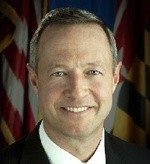 Wikimedia
Martin O'Malley
Wikimedia
Martin O'Malley
Who is he? He’s a former governor of Maryland and mayor of Baltimore.
Is he running? Yes. He announced his campaign on May 30.
Who wants him to run? Not clear. He has some of the leftism of Bernie Sanders or Elizabeth Warren, but without the same grassroots excitement.
Can he win the nomination? Probably not. Why O’Malley who says all the right progressive things, can’t gain any momentum among progressives who seem eager for Sanders, for Warren, really for anyone but Clinton, is a fascinating conundrum. Recently, he has feuded with Democratic National Committee Chair Debbie Wasserman Schultz, accusing the party apparatus of being in the tank for Clinton.
What else do we know? Have you heard that he plays in a Celtic rock band? You have? Oh.
Does his website have a good 404 page? No.
 Wikimedia
Bernie Sanders
Wikimedia
Bernie Sanders
Who is he? A self-professed socialist, Sanders represented Vermont in the U.S. House from 1991 to 2007, when he won a seat in the Senate.
Is he running? Yes. He announced April 30.
Who wants him to run? Far-left Democrats; Brooklyn-accent aficionados; progressives who worry that a second Clinton administration would be far too friendly to the wealthy.
Can he win the nomination? When Sanders launched his campaign, this question seemed more or less beside the point. That’s no longer true: Sanders is running neck and neck or even ahead of Clinton in key early primary states and regularly drawing larger crowds than her. It remains extremely difficult to see him winning the nomination—as Dems from Howard Dean to George McGovern can remind you, primary voters tend to gravitate to “electable” general-election candidates alone.
Does his website have a good 404 page? Yes, and it is quintessentially Sanders.
* * *
The Republicans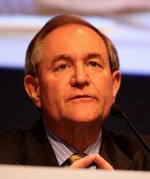 Gage Skidmore
Jim Gilmore
[image error]
Gage Skidmore
Jim Gilmore
[image error] Who is he? Right? Gilmore was governor of Virginia from 1998 to 2002. Before that, he chaired the Republican National Committee for a year. In 2008, he ran for Senate in Virginia and lost to Mark Warner by 31 points.
Is he running? Yes. He filed his papers on July 29.
Who wants him to run? Who knows?
Can he win? Nah.
Does his website have a good 404 page? Nah.
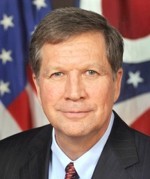 Wikimedia
John Kasich
[image error]
Wikimedia
John Kasich
[image error] Who is he? The current Ohio governor ran once before, in 2000, after a stint as Republican budget guru in the House. Between then and his election in 2010, he worked at Lehman Brothers. Molly Ball wrote a definitive profile in April.
Is he running? Yes. His announcement was July 21 at Ohio State University in Columbus.
Who wants him to run? Kasich’s pitch: He’s got better fiscal-conservative bona fides than any other candidate in the race, he’s proven he can win blue-collar voters, and he’s won twice in a crucial swing state.
Can he win the nomination? Jeb Bush’s slippage might create a good opening for Kasich: He’s an executive with conservative bonafides but establishment appeal. But Kasich has a penchant for alienating the Republican base, so it remains to be seen whether he’s the perfect substitute for Bush or just the Jon Hunstman of this cycle—a moderate Republican governor beloved of the media but not voters.
What else do we know? John Kasich bought a Roots CD and hated it so much he threw it out of his car window. John Kasich hated the Coen brothers’ classic Fargo so much he tried to get his local Blockbuster to quit renting it. George Will laughed at him. John Kasich is the Bill Brasky of philistinism. John Kasich probably hated that skit, too.
Does his website have a good 404 page? Nope.
 David Shankbone
Chris Christie
[image error]
David Shankbone
Chris Christie
[image error] Who is he? What’s it to you, buddy? The combative New Jerseyan is in his second term as governor and previously served as a U.S. attorney.
Is he running? Christie kicked off his campaign June 30 at Livingston High School, his alma mater.
Who wants him to run? Moderate and establishment Republicans who don’t like Bush or Romney; big businessmen, led by Home Depot founder Ken Langone.
Can he win the nomination? Doubtful. The tide of opinion had turned against Christie even before the "Bridgegate" indictments. Citing his horrific favorability numbers, FiveThirtyEight bluntly puns that “Christie's access lanes to the GOP nomination are closed.”
Does his website have a good 404 page? We would have gone with the GIF, but sure.
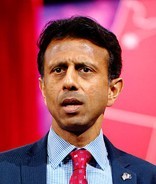 Gage Skidmore
Bobby Jindal
[image error]
Gage Skidmore
Bobby Jindal
[image error] Who is he? A Rhodes Scholar, he’s the outgoing governor of Louisiana. He previously served in the U.S. House.
Is he running? Yes. He kicked off his campaign on June 24.
Who wants him to run? It’s hard to say. Jindal has assiduously courted conservative Christians, both with a powerful conversion story (he was raised Hindu but converted to Catholicism in high school) and policies (after other governors reversed course, he charged forward with a religious-freedom law). But he still trails other social conservatives like Ted Cruz and Mike Huckabee.
Can he win the nomination? No. Jindal still lacks traction at the national level, he faces an overcrowded field of social conservatives, and his stewardship of Louisiana has come in for harsh criticism even from staunch fiscal conservatives. It’s hard to see how he gains momentum from here.
What else do we know? In 1994, he wrote an article called “Physical Dimensions of Spiritual Warfare,” in which he described a friend’s apparent exorcism.
Does his website have a good 404 page? Meh. Good joke, but past its expiration date.
 Gage Skidmore
Donald Trump
[image error]
Gage Skidmore
Donald Trump
[image error] Who is he? The real-estate developer and reality-TV star fired TV personality almost certainly isn’t worth as much as he wants you to think he is.
Is he running? Is he ever! Surprising his rivals, the press, and—one suspects—himself, The Donald is the biggest political story in America.
Who wants him to run? A shocking portion of the Republican primary electorate; Democrats; white supremacists. The rest of the Republican field, along with its intellectual luminaries, however, seem horrified.
Can he win the nomination? We’ve heard over and over again that he has no chance. But after months, he’s still leading the field, so ...
[image error] What else do we know? He cheats at golf, probably.[image error] Gage Skidmore
Jeb Bush
[image error]
Gage Skidmore
Jeb Bush
[image error] Who is he? The brother and son of presidents, he served two terms as governor of Florida, from 1999 to 2007.
Is he running? Yes, as of June 15.
Who wants him to run? Establishment Republicans; George W. Bush; major Wall Street donors.
Can he win the nomination? After turning out to be a lackluster candidate and delivering three bad performances in debates, the conventional wisdom that Bush would eventually rise to the top has evaporated. His fundraising has slowed, his organizing is weak, his poll numbers have tanked, and his campaign is laying off staffers. Many reporters and pundits think his time is nearly up, though Bush insists he’s going to solider through and win.
Does his website have a good 404 page? Yes—y en español también.
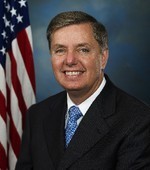 Wikimedia
Lindsey Graham
Wikimedia
Lindsey Graham
Who is he? A senator from South Carolina, he’s John McCain’s closest ally in the small caucus of Republicans who are moderate on many issues but very hawkish on foreign policy.
Is he running? He sure is. Graham kicked off the campaign June 1.
Who wants him to run? John McCain, naturally. Senator Kelly Ayotte, possibly. Joe Lieberman, maybe?
Can he win the nomination? Not really. The South Carolina senator seems to be running in large part to make sure there’s a credible, hawkish voice in the primary. It seems like Graham started his campaign almost as a lark but has started to enjoy the ride, plus he’s shown he’s a great performer on the stump. Molly Ball explores his chances at greater length here.
What else do we know? Graham promises to have a rotating first lady if he wins. We nominate Lana del Ray.
 Michael Vadon
George Pataki
[image error]
Michael Vadon
George Pataki
[image error] Who is he? Pataki ousted incumbent Mario Cuomo in 1994 and served three terms as governor of New York.
Is he running? Yes. He announced May 28.
Who wants him to run? It's not clear. Establishment Northeastern Republicans once held significant sway over the party, but those days have long since passed.
Can he win the nomination? No. As my colleague Russell Berman previously noted, Pataki is one of the longest of the long-shot GOP candidates. He has touted his leadership on 9/11, when he served as governor, but so did former New York City Mayor Rudy Giuliani. He was also a successful conservative governor in a deep-blue Northeastern state, but so was former Massachusetts Governor Mitt Romney. He seems to be socially liberal enough to alienate primary voters, but not enough to capture Democrats.
Does his website have a good 404 page? No.
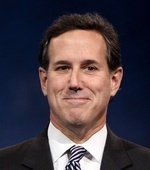 Gage Skidmore
Rick Santorum
[image error]
Gage Skidmore
Rick Santorum
[image error] Who is he? Santorum represented Pennsylvania in the Senate from 1995 until his defeat in 2006. He was the runner-up for the GOP nomination in 2012.
Is he running? Yes, with a formal announcement on May 27.
Who wants him to run? Social conservatives. The former Pennsylvania senator didn't have an obvious constituency in 2012, yet he still went a long way, and Foster Friess, who bankrolled much of Santorum's campaign then, is ready for another round.
Can he win the nomination? Nah. As much as Santorum feels he deserves more respect for his 2012 showing, neither voters nor the press seem inclined to give it to him, and he remains trapped in the basement.
Does his website have a good 404 page? No.
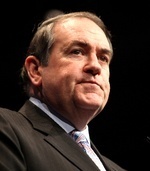 Gage Skidmore
Mike Huckabee
[image error]
Gage Skidmore
Mike Huckabee
[image error] Who is he? An ordained preacher, former governor of Arkansas, and Fox News host, he ran a strong campaign in 2008, finishing third, but sat out 2012.
Is he running? Yes. He kicked off the campaign May 5.
Who wants him to run? Social conservatives; evangelical Christians.
Can he win the nomination? Huckabee's struggle is to prove that he's still relevant. Since he last ran in 2008, a new breed of social conservatives has come in, and he’s had trouble keeping up with fresher faces like Ted Cruz and Ben Carson. His brand of moral crusading feels a bit out of date in an era of same-sex marriage—not least when he curiously chose to attack Beyoncé. Huckabee’s answer has been to play as a populist, but that has its own pitfalls: He faces fire from strict conservative groups for tax hikes while he was governor.
Does his website have a good 404 page? It’s pretty good.
 Gage Skidmore
Ben Carson
[image error]
Gage Skidmore
Ben Carson
[image error] Who is he? A celebrated former head of pediatric neurosurgery at Johns Hopkins, Carson became a conservative folk hero after a broadside against Obamacare at the 2013 National Prayer Breakfast.
Is he running? Yes. He announced May 4.
Who wants him to run? Grassroots conservatives, who have boosted him up near the top of polls, even as Republican insiders cringe. Carson has an incredibly appealing personal story—a voyage from poverty to pathbreaking neurosurgery—and none of the taint of politics.
Can he win the nomination? History weighs heavily against Carson: Not since Dwight Eisenhower has either party nominated anyone without prior elected experience for the presidency. Nonetheless, Carson has quietly shown impressive staying power and is running second or third in national polls. One challenge is that his politics are eclectic unto near incoherence, and he has a tendency to do things like compare ISIS to the Founding Fathers.
Does his website have a good 404 page? No.
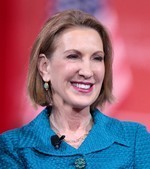 Gage Skidmore
Carly Fiorina
[image error]
Gage Skidmore
Carly Fiorina
[image error] Who is she? Fiorina rose through the ranks to become CEO of Hewlett-Packard from 1999 to 2005, before being ousted in an acrimonious struggle. She advised John McCain’s 2008 presidential campaign and unsuccessfully challenged Senator Barbara Boxer of California in 2010.
Is she running? Yes, as of a May 4 announcement.
Who wants her to run? It isn’t clear exactly what Fiorina’s constituency is, but she’s a business-friendly candidate with a talent for a sharp turn of phrase or jab.
Can she win the nomination? Fiorina has gone from also-ran to huge story, largely on the strength of two debate performances. Her dominant showing at the “kid’s table” in the first GOP debate earned her a spot at the main event for the second, where she was again declared the winner by acclamation. So is she for real? Her first round as a candidate, against Barbara Boxer for Senate in 2010, didn’t turn out so well, so the question is how well she learned the lessons of the licking and can turn them into a more successful campaign.
What else do we know? Fiorina's 2010 Senate race produced two of the most entertaining and wacky political ads ever, "Demon Sheep" and the nearly eight-minute epic commonly known as "The Boxer Blimp."
Does her website have a good 404 page? No.
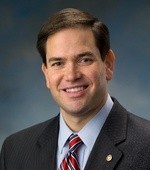 Wikimedia
Marco Rubio
[image error]
Wikimedia
Marco Rubio
[image error] Who is he? A second-generation Cuban-American and former speaker of the Florida House, Rubio was catapulted to national fame in the 2010 Senate election, after he unexpectedly upset Governor Charlie Crist to win the GOP nomination.
Is he running? Yes—he announced on April 13.
Who wants him to run? Rubio enjoys establishment support, and has sought to position himself as the candidate of an interventionist foreign policy.
Could he win the nomination? Rubio has long been a sleeper candidate, polling in the middle but with huge potential. Starting in mid-October or so, he suddenly woke up. Rubio has been strong at debates, particularly the third one, and he’s benefitting from (and driving) the collapse of the Jeb Bush campaign. As of early November, most people who think Trump or Carson can’t win are placing their bets on Rubio.
Does his website have a good 404 page? It’s decent.
 Wikimedia
Rand Paul
[image error]
Wikimedia
Rand Paul
[image error] Who is he? An ophthalmologist and son of libertarian icon Ron Paul, he rode the 2010 Republican wave to the Senate, representing Kentucky.
Is he running? Yes, as of April 7.
Who wants him to run? Ron Paul fans; Tea Partiers; libertarians; civil libertarians; non-interventionist Republicans.
Can he win the nomination? Once tabbed by Time as the most interesting man in politics, he has failed to elicit much interest from voters so far. Paul’s unorthodox politics always made him tough to see in the Republican top tier, but he had impressed many observers during his time in the Senate as a wily campaigner. But his campaign seems stuck in neutral. He hasn’t managed to create the enthusiasm he needs among fans of his father, former Representative Ron Paul, still has no fundraising base, and seems to have largely disappeared from view, leaving in his wake lots of “What happened to Rand Paul?” headlines. A good debate in August would have helped him, but he didn’t have it.
Does his website have a good 404 page? No.
 Wikimedia
Ted Cruz
[image error]
Wikimedia
Ted Cruz
[image error] Who is he? Cruz served as deputy assistant attorney general in the George W. Bush administration and was appointed Texas solicitor general in 2003. In 2012, he ran an insurgent campaign to beat a heavily favored establishment Republican for Senate.
Is he running? Yes. He launched his campaign March 23 at Liberty University in Virginia.
Who wants him to run? Hardcore conservatives; Tea Partiers who worry that Rand Paul is too dovish on foreign policy; social conservatives.
Can he win the nomination? Though his announcement gave Cruz both a monetary and visibility boost, he still carries serious weaknesses. Much of Cruz's appeal to his supporters—his outspoken stances and his willingness to thumb his nose at his own party—also imperil him in a primary or general election, and he's sometimes been is own worst enemy when it comes to strategy. But Cruz is familiar with running and winning as an underdog, and he seems to be positioning himself to absorb Trump supporters once the expected (but never explained) Trump collapse occurs.
Does his website have a good 404 page? No.
* * *
Out of the Running Democrats Wikimedia
Lawrence Lessig
Wikimedia
Lawrence Lessig
Who is he? Lessig is a professor at Harvard Law School, political activist, and occasional Atlantic contributor.
Is he running? No. Having announced a run in early September, he dropped out on November 2.
Who wanted him to run? Lessig’s campaign was designed to cater almost exclusively to the many Americans who are upset about the influence of money in politics. He pitched himself as a “referendum president” who would pass his proposed Citizens Equality Act of 2017, which would enact universal voting registration, campaign-finance limits, and anti-gerrymandering provisions.
Could he have won the nomination? No. In dropping out, he cited his inability to break into the Democratic debates, but given his lack of electoral experience, his idiosyncratic platform, and the track record of his Mayday PAC in the 2014 election, he never really had a shot.
What else do we know? In a season 6 episode of The West Wing, a fictional Lessig (played by Christopher Lloyd) worked with the White House to write a new constitution for Belarus.
Does his website have a good 404 page? “Sorry, we’re too busy fixing democracy to design a clever 404 page!” You have time now!
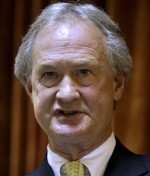 Steven Senne / AP
Lincoln Chafee
Steven Senne / AP
Lincoln Chafee
Who is he? The son of beloved Rhode Island politician John Chafee, Linc took his late father’s seat in the U.S. Senate, serving as a Republican. He was governor, first as an independent and then as a Democrat.
Is he running? No. Chafee announced his run on June 3, but ended it October 23.
Who wanted him to run? You can meet all 10 of them in this great NPR piece.
Could he have won the nomination? No. Chafee’s showing in the first debate was so bad that even Wolf Blitzer begged him to get out for his own reputation’s sake.
Does his website have a good 404 page? No.
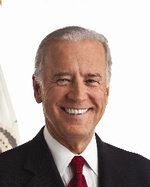 Wikimedia
Joe Biden
Wikimedia
Joe Biden
Who is he? Biden is vice president, and the foremost American advocate for aviator sunglasses and passenger rail.
Is he running? No. After lengthy deliberation, Biden ruled out a run on October 21.
Who wanted him to run? The original driving force for the run seems to have been the late Beau Biden, along with his brother Hunter. An outside group called Draft Biden (slogan: “I’m Ridin’ With Biden”) tried to coax him in.
Could he have won the nomination? It’s highly doubtful. Even when Hillary Clinton was at her weakest, she had huge organizational advantages. And past presidential campaign showed that Biden, while compelling, could be an undisciplined, self-defeating candidate.
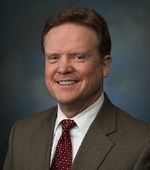 Wikimedia
Jim Webb
Wikimedia
Jim Webb
Who is he? Webb is a Vietnam War hero, author, and former secretary of the Navy. He served as a senator from Virginia from 2007 to 2013.
Is he running? Not at the moment. Webb launched his bid July 2 but dropped it October 20. He might yet mount an independent campaign.
Who wants him to run? Dovish Democrats; socially conservative, economically populist Democrats; the Anybody-But-Hillary camp.
Could he have won the nomination? No. He’s simply more conservative than most Democrats, out of step with the party on racial issues, and ill at ease on the stump.
What else do we know? Read Webb’s longtime friend James Fallows on why he wanted Webb in the race.
Does his website have a good 404 page? No.
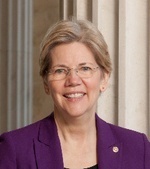 Wikimedia [image error]
Elizabeth Warren
Wikimedia [image error]
Elizabeth Warren
Who is she? Warren has taken an improbable path from Oklahoma, to Harvard Law School, to progressive heartthrob, to Massachusetts senator.
Is she running? Haha, still no!
Who wants her to run? Progressive Democrats; economic populists, disaffected Obamans, disaffected Bushites.
Can she win the nomination? No, because she’s not running.
* * *
Republicans Gage Skidmore
Rick Perry
[image error]
Gage Skidmore
Rick Perry
[image error] Who is he? George W. Bush’s successor as governor of Texas, he entered the 2012 race with high expectations, but sputtered out quickly. He left office in 2014 as the Lone Star State’s longest-serving governor.
Is he running? Yes. He announced on June 4. Perry dropped out of the race on September 11.
Who wanted him to run? Bueller?
Could he have won the nomination? No. Perry promoters insisted that Rick 2016 was a polished, smart campaigner, totally different from the meandering, spacey Perry of 2012. It didn’t seemed to matter in this field. Perry had to quit paying his staff in South Carolina and New Hampshire, and was down to a single staffer in Iowa when he dropped out.
Does his website have a good 404 page? That depends. Is this an “oops” joke? If so, yes.
 Gage Skidmore
Sarah Palin
[image error]
Gage Skidmore
Sarah Palin
[image error] Who is she? If you have to ask now, you must not have been around in 2008. That’s when John McCain selected the then-unknown Alaska governor as his running mate. After the ticket lost, she resigned her term early and became a television personality.
Is she running? No, despite a bizarre speech in January that made a compelling case both ways.
Who wants her to run? Palin still has diehard grassroots fans, but there are fewer than ever.
Can she win the nomination? No.
When will she announce? It doesn't matter.
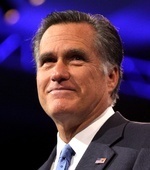 Gage Skidmore
Mitt Romney
[image error]
Gage Skidmore
Mitt Romney
[image error] Who is he? The Republican nominee in 2012 was also governor of Massachusetts and a successful businessman.
Is he running? Probably not, but who knows! He announced in late January that he would step aside, but now New York claims that the Trump boom has him reconsidering.
Who wanted him to run? Former staffers; prominent Mormons; Hillary Clinton's team. Romney polled well, but it's hard to tell what his base would have been. Republican voters weren't exactly ecstatic about him in 2012, and that was before he ran a listless, unsuccessful campaign. Party leaders and past donors were skeptical at best of a third try.
Could he have won the nomination? He proved the answer was yes, but it didn't seem likely to happen again.
 Gage Skidmore
John Bolton
Gage Skidmore
John Bolton
Who is he? A strident critic of the UN and leading hawk, he was George W. Bush’s ambassador to the UN for 17 months.
Is he running? Nope. After announcing his announcement, in the style of the big-time candidates, he posted on Facebook that he wasn’t running.
Who wanted him to run? Even among super-hawks, he didn’t seem to be a popular pick, likely because he had no political experience.
Could he have won the nomination? They say anything is possible in politics, but this would test the rule. A likelier outcome could be a plum foreign-policy role in a hawkish GOP presidency.
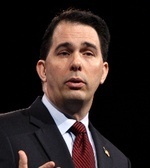 Gage Skidmore
Scott Walker
[image error]
Gage Skidmore
Scott Walker
[image error] Who is he? Elected governor of Wisconsin in 2010, Walker earned conservative love and liberal hate for his anti-union policies. In 2013, he defeated a recall effort, and he won reelection the following year.
Is he running? No. Walker dropped out of the race on September 21.
Who wanted him to run? Walker was a favorite of conservatives who detest the labor movement because of his union-busting in Wisconsin. He attracted interest from the Koch brothers, and some establishment Republicans saw him as the perfect marriage of executive know-how, business-friendly credentials, and social conservatism without culture-warrior baggage.
Could he have won the nomination? For months, Walker was considered—along with Jeb Bush and Marco Rubio—a top-tier contender for the nomination. Hurricane Trump hurt all three, but none more than Walker. After largely fading from view during the second presidential debate, he polled below 1 percent in a national CNN poll. Perhaps a radically different campaign would have produced a different result, but Walker didn’t seem ready for national primetime.
Did his website have a good 404 page? Aye, matey.









Atlantic Monthly Contributors's Blog
- Atlantic Monthly Contributors's profile
- 1 follower



